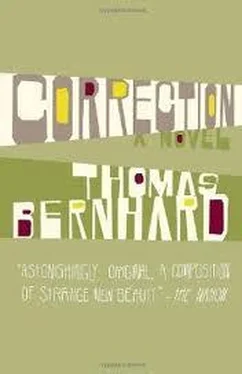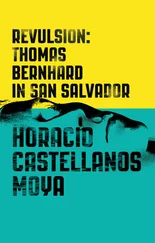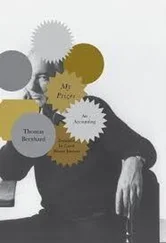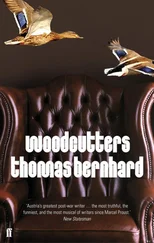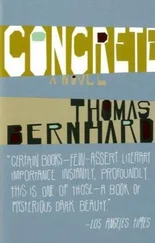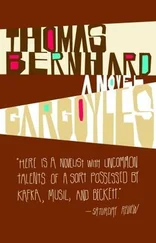Because we are weak, infirm, we must tolerate no weakness whatever. And if it isn’t life and if it isn’t nature then it’s what we read, it’s the life and the nature of what we read, for long stretches there’s only the nature we get out of our reading, life out of books, periodicals, all kinds of writings, we bridge the gaps between our contact with nature Itself by reading that represents nature, represents life. Because we can’t always, no organism is capable of it, absorb nature into ourselves, absorb life-as-nature into ourselves, we go for long stretches, for years on end absorbing it only through reading matter, from the newspapers, from written stuff. In several languages, for variety’s sake. At certain points in our existence we break off the nature of our existence and proceed to exist only in books, in written stuff, until we again have the opportunity to exist in nature and continue to exist in nature, very often as another person, always as another person, “always as another person” underlined. We couldn’t endure a life in nature, necessarily always a free nature, without respite, so we always step outside nature, for no reason but survival, and take refuge in our reading, and live for a long time in our books, a more undisturbed life. I’ve lived half my life not in nature but in my books as a nature-substitute, and the one half was made possible only by the other half. Or else we exist in both simultaneously, in nature and in reading-as-nature, in this extreme nervous tension which as a form of consciousness is endurable only for the shortest possible time span. The question can’t be whether I live in nature as nature, or in reading-as-nature, or in nature-as-reading, in the nature of nature-as-reading andsoforth, so Roithamer. To everything that we think and fill our own life and that we hear and see, perceive, we always have to add: the truth, however, is … as a result, uncertainty has become a chronic condition with us. Those abrupt transitions from one nature into the other, from one form of awareness into the other, so Roithamer. When we think, we know nothing, everything is open, nothing, so Roithamer. The nature of the case is always something else, so Roithamer. First, the Cone offers views in all directions, then, the Cone offers views only southward and northward, then, only to the west and to the east, finally, only to the north. The spaces, not rooms, the spaces are such as to correspond perfectly to my sister’s nature, they are designed to adapt themselves to whatever state of mind my sister finds herself in as she enters these spaces, and to do so immediately. To achieve this it was naturally necessary to have kept my sister under constant observation, continuous observation of my sister from earliest childhood on, it’s been most helpful that I’ve always kept her under the most intensive observation, and always quite objectively, trying to understand her nature through all the years of her life, even before it ever occurred to me to build the Cone for her. My observation of my sister turned into an art and into a science of observation.
And I naturally also observed everything connected with my sister, above all her habits, her possibilities, “possibilities” underlined, her impossibilities, what she was born with, what was bred into her, what she displays openly.
Constant study of her inner life, insofar as this was possible by means of constant, continual observation and the constant and continuous study of her appearance, the inside and the outside are the same, everything depends on the observer’s judgment. Knowing that I must never relax this observation of my sister, must never relinquish this observation, mustn’t allow my judgment to be swayed, to become imprecise. First I had to concentrate my entire being, meaning all my mind and feeling, on my sister, then I had to do the same for the construction of the Cone, finally I applied my observations as insights to the construction of the Cone, so that I must assume that the Cone is ideal for my sister. The Cone’s interior corresponding to my sister’s inner being, the Cone’s exterior to her outward being, and together her whole being expressed as the Cone’s character, the inside and outside of the Cone are as inseparable as the inside and outside of my sister, but the incessant observation of my sister and the incessant observation of the construction of the Cone have led to the result which now stands in the center of the Kobernausser forest. Therefore, if my observation of my sister is correct, then the construction of the Cone is correct, so Roithamer. The consistent study of one object (of my sister), the consistent mode of construction of the other object (the Cone). The construction of such a Cone for such a person as my sister is feasible only after the study of the person (my sister) for whom such an edifice (the Cone) is being erected, has been completed. First I study the person for whom I am building such an edifice, then I build the edifice on the basis of my study, and such a study must be ultraconsistent. And only after I have truly studied that person’s nature and gone far enough in my study to have grasped that person’s nature, or at least grasped it insofar as it is humanly possible to grasp it, can I be sufficiently clear in my own mind as to what I am building and what materials I must use to build with. This is an edifice of stone and brick. The problem of the statics of the one (the Cone) is the problem of the nature of the other (my sister). And to build against that person’s will, because one can build only against the will of a person like my sister. Not because of this person for whom I am building, but because of the person’s character, and in that character the one, if not emotionally sensitive, perhaps the one intellectually sensitive point. We decide to build though we don’t know what it means to build, as everyone knows, especially not what it means to build such an unheard-of edifice as the Cone for a person like my sister, we don’t realize that it is basically a lethal process.
Insofar as we have taken into consideration everything that must be taken into consideration we have to say that the art of building is a philosophical art in the highest degree, but the building professionals or the so-called building professionals have never understood, they shy away from this realization and refuse to enter into the problematics of it, and so we almost never get an art of building, all we see is the vulgarity of building. We must know the person and have seen through the person, or at least know the person up to the crucial point, and be familiar with him to the crucial, necessary degree, before we can build for him, for even after we have passed our tests on this score it remains questionable whether our edifice truly suits the person for whom we have built it, we assume that it suits him, just as I only assume that it suits my sister one hundred percent, because I must make this assumption, had to make this assumption all the time I was building, otherwise I’d have gone crazy and could never have finished the Cone at all, the completion of the Cone would have remained a utopian dream. Our buildings, no matter which, those intended as habitations as well as the non-habitations, would look rather different if those who built them had been in the least concerned about the people for whom they were building them, all of these buildings were built without asking those who would be affected, not to mention studying them. Just as we investigate the causes of disease nowadays, knowing they must be investigated, as the doctors can no longer evade this necessity of investigation, those who build should investigate those for whom they are building, they must investigate them, the investigation of the man for whom a building is being put up should be the duty of the man who is doing the building, the builder should be forbidden to build for someone he has not thoroughly investigated or at least understood to the necessary or the minimal necessary degree. The builders build without having concerned themselves with the nature of those for whom they are building, though the builders of course deny this when confronted with it. With nothing in their heads but their fees and their careers, those professional builders or whatever they may choose to call themselves put up their buildings without any idea of the people for whom they have built them, thereby committing one of the greatest crimes, “greatest crimes” underlined. After all it took me six years to build the Cone, a long time when subtracted from my life, and yet a short time when I consider that first I solidly prepared for it and then did a solid job of building.
Читать дальше
